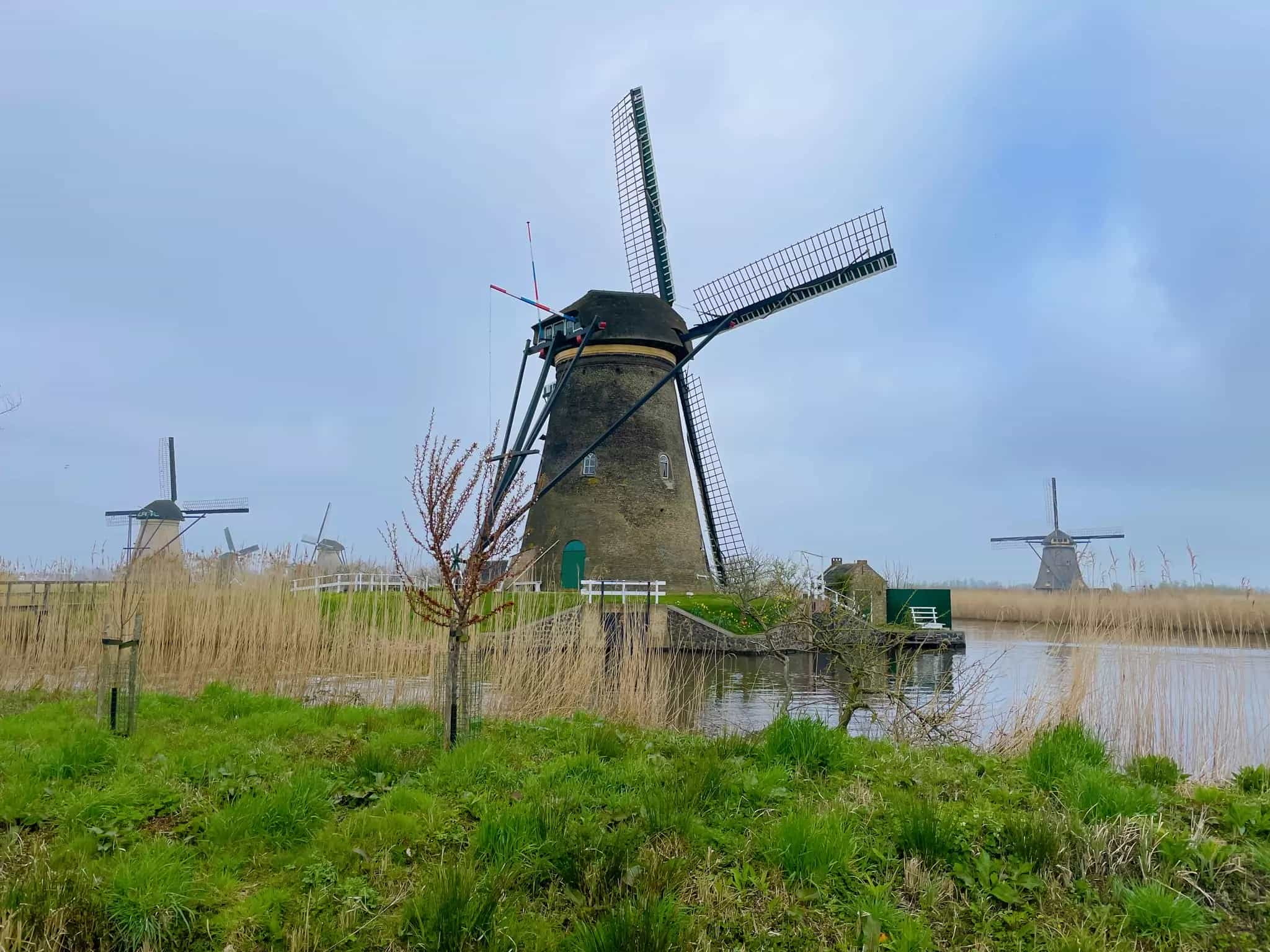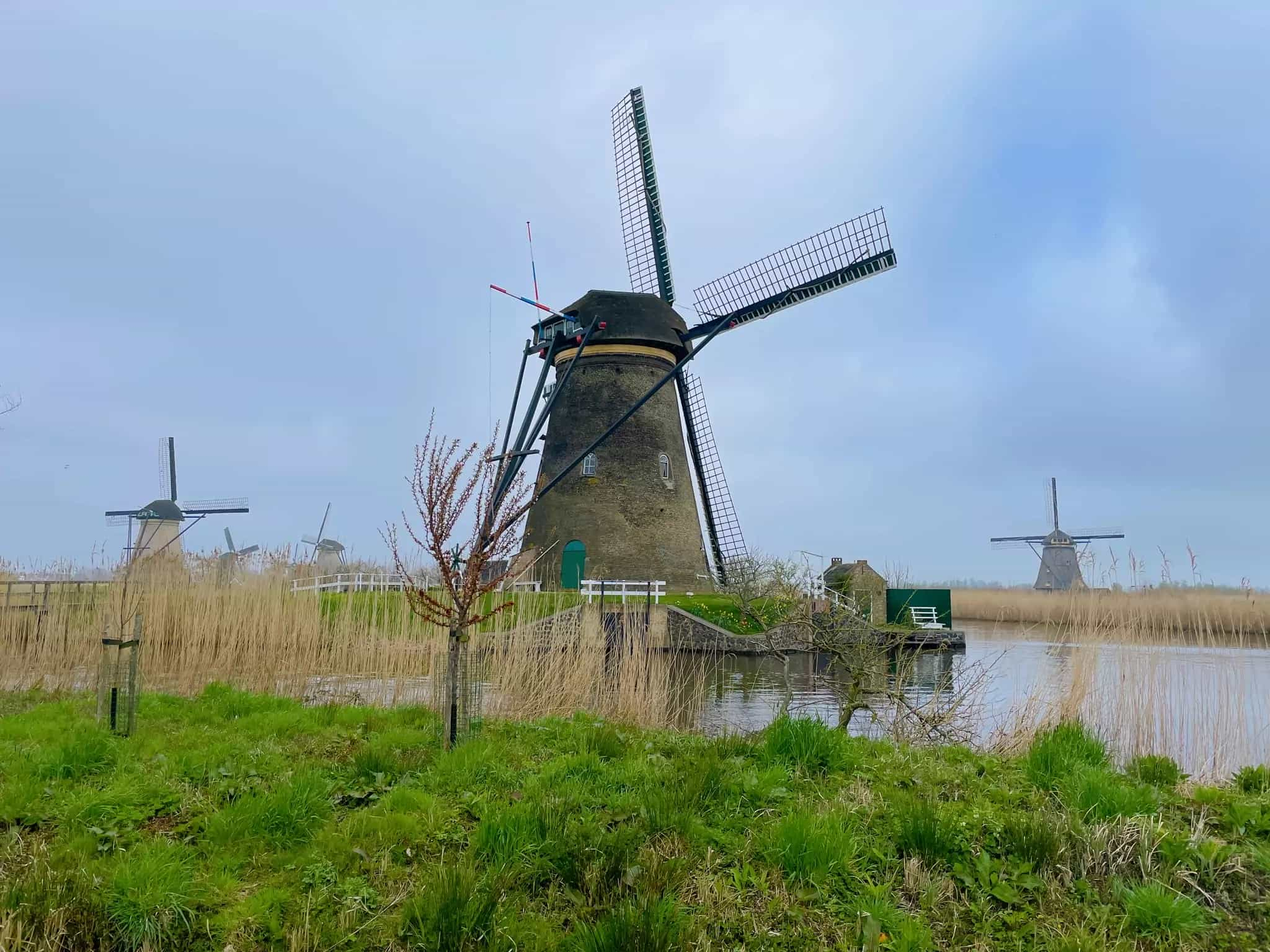The spring season is the perfect time to explore the tulip fields in the Netherlands. We took advantage of the Easter weekend to embark on a 3-day road trip. Admiring the tulip fields is an experience that everyone should have at least once in their lifetime. We were lucky to witness them firsthand in 2021, but unfortunately, Keukenhof Park was closed due to the pandemic. Now, a few years later, we are back to fully immerse ourselves in this incredible experience.
If you want to discover the most beautiful tulip fields in the Netherlands and find out the best time to visit, this article is for you. Here is our itinerary to admire the flower fields in Holland, along with activity ideas and practical tips.
The Tulip Season in the Netherlands
Why Tulips in the Netherlands?
Tulips, originally from Turkey, arrived in the Netherlands in the 16th century and quickly became a huge success. Tulip mania reached its peak in the 17th century, with a high demand for tulip bulbs. Their value skyrocketed, and tulips became a symbol of wealth and prosperity in the Netherlands.
Additionally, the Dutch climate is perfect for tulip cultivation. The winters are cool and humid, allowing the bulbs to rest, while the springs are mild and dry, promoting the growth of tulips. Moreover, the sandy soils of the Netherlands are perfectly suited for tulip cultivation.
Today, the Netherlands is one of the main exporters of cut flowers worldwide, and tulips are one of the country’s main floral crops.
When is the Tulip Season in the Netherlands?
While some tulip varieties bloom earlier or later than others, the tulip season in the Netherlands typically takes place from mid-March to early May, with the peak bloom occurring in April. The exact timing of tulip bloom also varies depending on the weather conditions and the region where they are cultivated.
Where are the Tulip Fields in the Netherlands?
There are several places where you can find tulip fields in the Netherlands, but the main production regions are located in the provinces of North Holland, South Holland, and Flevoland.
Keukenhof, located between Rotterdam and Amsterdam, is the most well-known region for tulips in the Netherlands, thanks to its famous park that is open to the public during the tulip season. Nearby, you will also find numerous multicolored tulip fields, as well as hyacinths and daffodils in the Bollenstreek region, between Leiden and Haarlem.
However, there are other less touristy destinations that also offer the opportunity to admire tulip fields, such as the Noordoostpolder region in the province of Flevoland. This polder was created after the closure of the Zuiderzee Sea in the 1930s and provides perfect soil and climate conditions for tulip cultivation.
Lastly, you can also find tulips on the Wadden Islands, in the northern part of the Netherlands. Besides the tulip fields, we highly recommend visiting these authentic and exceptionally beautiful islands.
Please note that tulip fields are often private properties, so it is important to respect the work of the farmers. Avoid walking in the tulip fields, even if you see many tourists doing so!
How Long Should You Stay in the Netherlands?
The duration of your stay will depend on what you want to see and do. The Netherlands is a small country, but it has a vast historical, cultural, and natural heritage. We are fortunate to live just a few hours’ drive from the Netherlands, and we often go there for weekend getaways. Therefore, if you simply want to explore the tulip fields in Holland, 2 to 3 days will be sufficient. However, if you want to take the time to get lost in picturesque villages, observe the famous windmills, or even explore the Wadden Islands, you will need to add a few more days. Finally, if you also plan to visit must-see cities like Amsterdam, Rotterdam, or The Hague, a 10 to 14-day road trip is recommended.
The Netherlands in a Campervan
The Dutch are well-known for their love for van life. However, wild camping is not allowed in the Netherlands. Sleeping in nature or in a parking lot is not as tolerated as in France or Belgium and is even completely prohibited in some regions like Zeeland. Therefore, it is recommended to choose from the numerous campsites or camper van areas that you will find along your route to avoid being asked to leave in the middle of the night.
The Dutch highways are toll-free and often have four or five lanes, making driving in the Netherlands quite enjoyable. On smaller roads, there are many bike lanes. Although they are usually clearly marked, be cautious of cyclists at roundabouts!
Our Tulip Route in the Netherlands
The Windmills of Kinderdijk
Starting from Brussels, we decided to begin our road trip with a visit to Kinderdijk. The windmills of Kinderdijk are a UNESCO World Heritage site and a must-visit on the route to the tulip fields if you can make a little detour.
After just over an hour’s drive on a Friday evening, we parked for the night to be on-site early the next morning. We had spotted a camper van area just 15 minutes by bike from Kinderdijk. Unfortunately, although it was quite large, it was already full. So, we spent the night in a marina that had about ten spots facing the harbor, complete with electricity, showers, and toilets. It turned out to be a blessing in disguise!
The visit to Kinderdijk can be done on foot or by bike, and access is free. However, if you want to visit the interior of a windmill and take a boat tour, you will need to pay a single price of 19 euros (2023 rate). We found the price a bit high, so we settled for a walk amidst the windmills.


A Bike Ride Amongst the Tulips
After a lovely morning surrounded by windmills, we hit the road to Keukenhof. It’s about an hour’s drive between the two locations. We were hoping to spend the night in a camper van area amidst the tulip fields. We had already stayed there in 2021, and it was a really nice spot! Unfortunately, this one was also full. We ended up parking in a sandy parking lot where it seemed tolerated to spend the night.
The parking lot is located on the Tulip Route, a cycling path that allows you to tour the most beautiful tulip fields and explore the surroundings. It’s quite convenient since we already had our bikes with us. But if you don’t, you can easily rent them nearby.
For this bike ride, there are three marked routes of 10, 15, and 25 kilometers. We chose the longest loop because we had plenty of time. This ride takes you through different flower fields, and the scenery is absolutely breathtaking, although I must admit, there were a lot of people on this Easter Saturday! We also ride along a small lake with several terraces. Finally, the route leads us to the dunes of Noordwijk that line the North Sea. We take a little break by the seaside to admire the vastness of the beaches. On our way back to the parking lot, we pass through a wildlife park where we can see deer in the distance. In short, it’s a tulip route with incredibly diverse landscapes.
We absolutely loved this bike ride, which doesn’t require any particular difficulty level. I should mention that we were accompanied by our two children, aged 9 and 12, and my 75-year-old mother! Moreover, the bike path is perfectly safe, and obviously, there are no slopes. Another advantage of opting for the 25-kilometer route: after the tulip fields, we encountered far fewer people on the road!
Keukenhof Flower Park
Keukenhof is probably the most beautiful spring park in the world. It covers an area of 32 hectares and features blooming shrubs, themed gardens, canals, huge greenhouses, and even a windmill! Furthermore, the planting scheme changes every year to offer visitors something new each time. Despite being a popular tourist destination, I was afraid of being disappointed, but the visit was a unanimous success within our family. We spent 5 hours in the park from the early morning, and time just flew by.
Use original images in the respective parts
Seeing Tulips in Flevoland
We leave the park in the late morning. We have a long drive ahead of us, heading north towards Flevoland, the twelfth Dutch province and the smallest. In fact, it is a group of several polders, and the entire territory is located above sea level.
I read on several blogs that there are numerous tulip fields in this region, particularly around Noordoostpolder. But I have a bad feeling… Indeed, the articles were quite vague, and I don’t have a precise destination in mind. After 1.5 hours of driving, my suspicions are confirmed. We haven’t seen a single tulip!
Use original images in the respective parts
Schokland
We arrive at Schokland, a place I had set as our final destination in the GPS. The site is a UNESCO World Heritage site, and the atmosphere is quite unique. It used to be an island that was drained to build the polder. In the middle of the fields, we discover the remains of a harbor. Well, don’t make a special trip just to see it. But if you happen to be in the area, Schokland Island is an interesting point of interest. From above, with the drone, you can clearly see the delineation of the former port. Quite fascinating!
Urk
The afternoon is coming to an end, and it’s already time to think about our overnight spot. We head towards Urk, a fishing port where a camper van area is located. Luckily, we get the last spot and pay via a QR code system that also provides access to electricity and toilets. We then set out to explore this village and its streets, which seem frozen in time.
Like Schokland, Urk is a former island that was connected to the mainland when the Northeast polder was created. It’s Easter Sunday, all the restaurants are closed, and the few people we encounter are dressed in traditional costumes. The village has managed to preserve its island character and traditions. Ultimately, we really enjoyed discovering this atypical and picturesque place.
Regarding the tulips in Flevoland, I did get confirmation from our Instagram community that they do indeed exist! But it’s possible that early April was still too early to see the tulips due to the poor weather this year. After a little research, it turns out that this is indeed one of the largest bulb flower regions in Holland. The “tulipenroute” website for Flevoland will provide you with the information I missed during our visit.
Return to Brussels
It’s already Monday, time flies, and it’s time to head back. From Urk, we have a long journey ahead of us until we reach Brussels! We don’t take the fastest route because we decide to pass through Zeeland to see the Eastern Scheldt Barrier. We love Zeeland because it’s easy to park by the water for a day. In fact, many of you asked us on our Instagram account where the spot we stayed at was located. Know that you will find many places like this on Park4Night. However, you won’t be able to spend the night there!
We hope this article will help you plan your own road trip to enjoy the tulip season in the Netherlands. Feel free to leave a comment if you want to contribute. You can find all our road trips in the Netherlands on this page.
Note: The article has been adapted from its original content. Certain parts have been modified for clarity and coherence.

